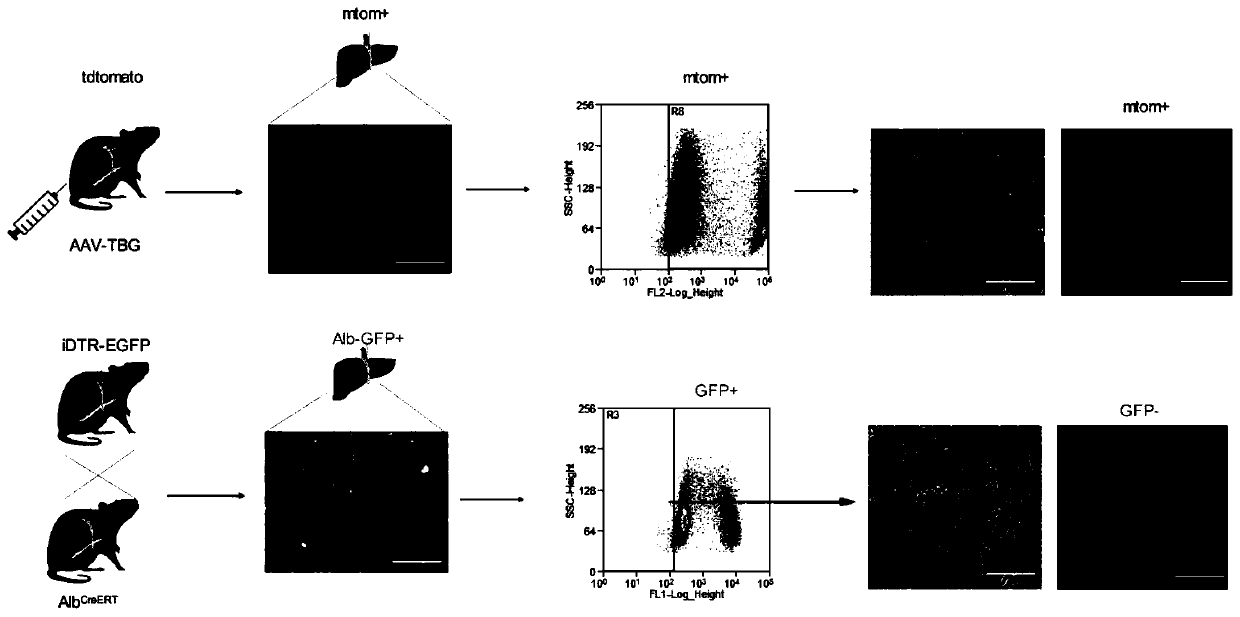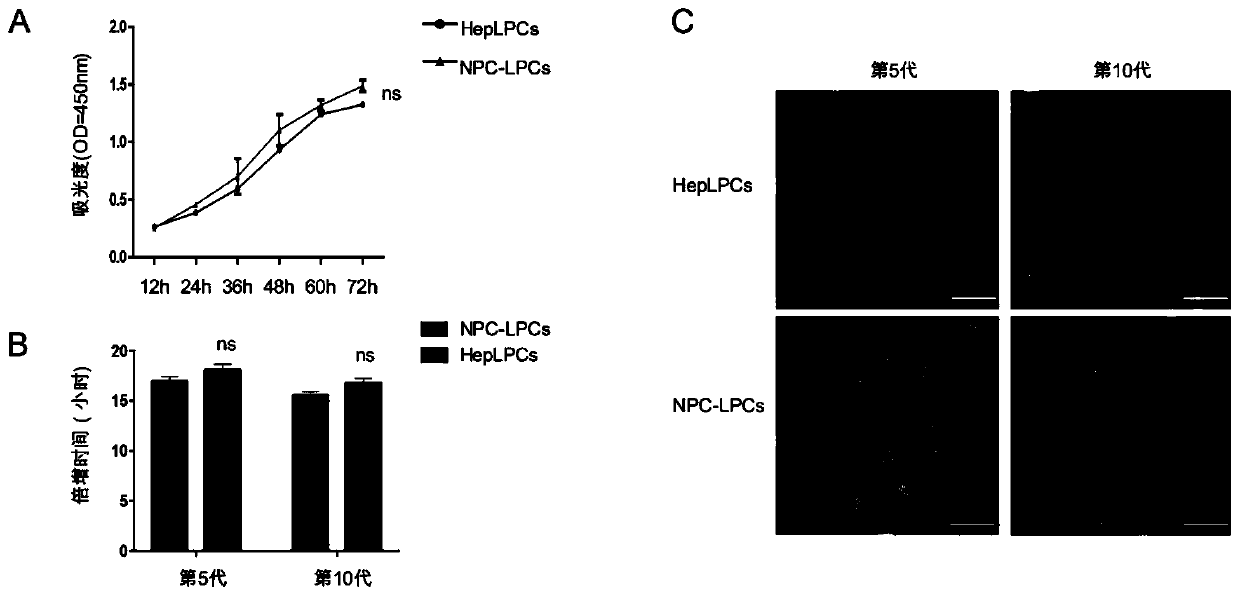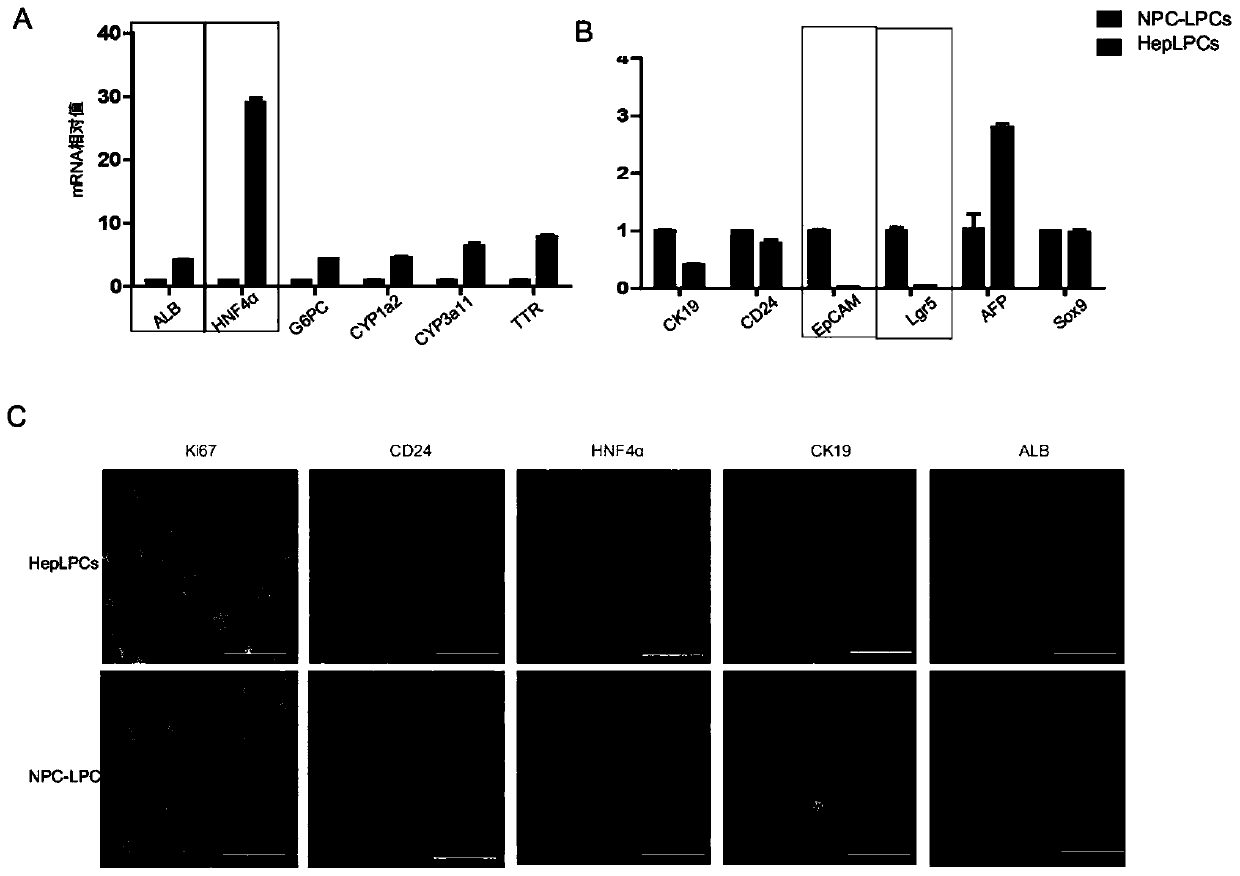Preparation method for hepatic progenitor cells from different sources and application of hepatic progenitor cells
A technology of hepatocytes and hepatic parenchyma cells, applied in the field of cell models, can solve problems such as limited exploration of in-depth cytological characteristics and functions
- Summary
- Abstract
- Description
- Claims
- Application Information
AI Technical Summary
Problems solved by technology
Method used
Image
Examples
Embodiment 1
[0026] 1. Experimental materials
[0027] 1. Reagents related to cell culture
[0028] The recombinant protein HGF used in the present invention was purchased from Peprotech; and other small molecular compounds such as Y27632, A83-01 and CHIR99021 were purchased from TargetMol; the cells used were all derived from primary hepatocytes isolated from fresh liver tissue, and Use a specific cell culture medium (i.e., TEM proliferation medium) to culture and isolate type IV collagenase used in primary cells: purchased from Sigma; double combination antibiotics of penicillin and streptomycin purchased from Bo Rui Biopharmaceutical Company; William's E culture The base and HANKs solution were purchased from Shanghai Yuanpei Biological Company; the PBS buffer (Phosphate Buffer Solution) used for washing and resuspending cells was purchased from Gibco Company; the biological reagents used for frozen cells were purchased from Xinsaimei Company; The medium Dulbecco's modified Eaglemedium...
PUM
 Login to View More
Login to View More Abstract
Description
Claims
Application Information
 Login to View More
Login to View More - R&D
- Intellectual Property
- Life Sciences
- Materials
- Tech Scout
- Unparalleled Data Quality
- Higher Quality Content
- 60% Fewer Hallucinations
Browse by: Latest US Patents, China's latest patents, Technical Efficacy Thesaurus, Application Domain, Technology Topic, Popular Technical Reports.
© 2025 PatSnap. All rights reserved.Legal|Privacy policy|Modern Slavery Act Transparency Statement|Sitemap|About US| Contact US: help@patsnap.com



